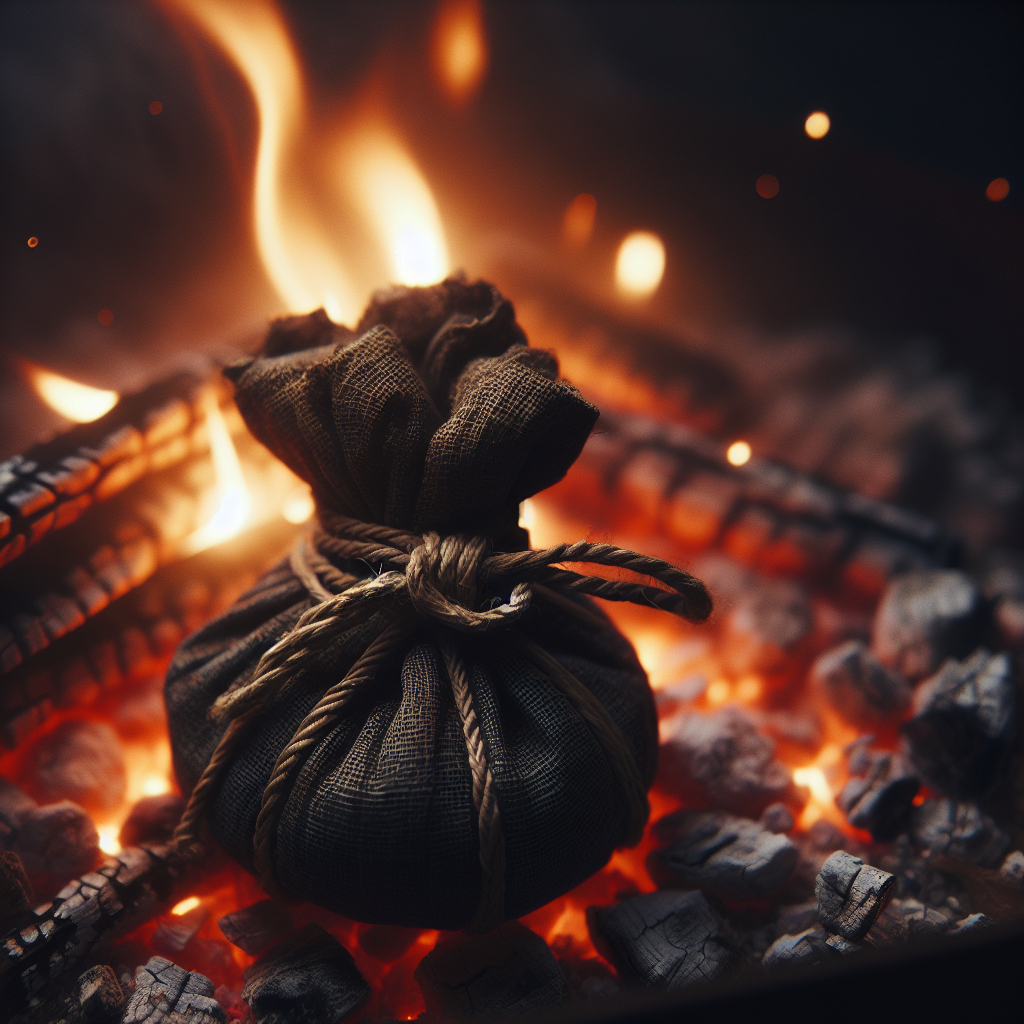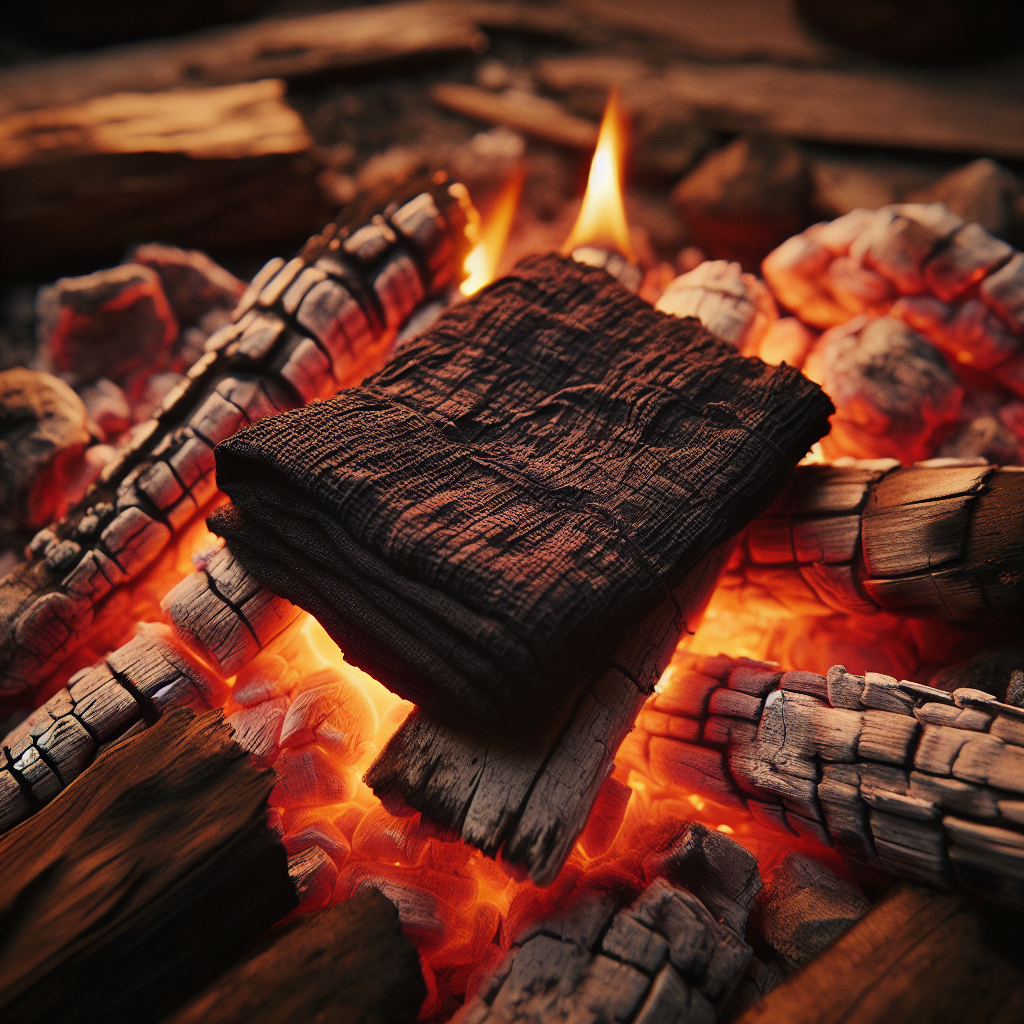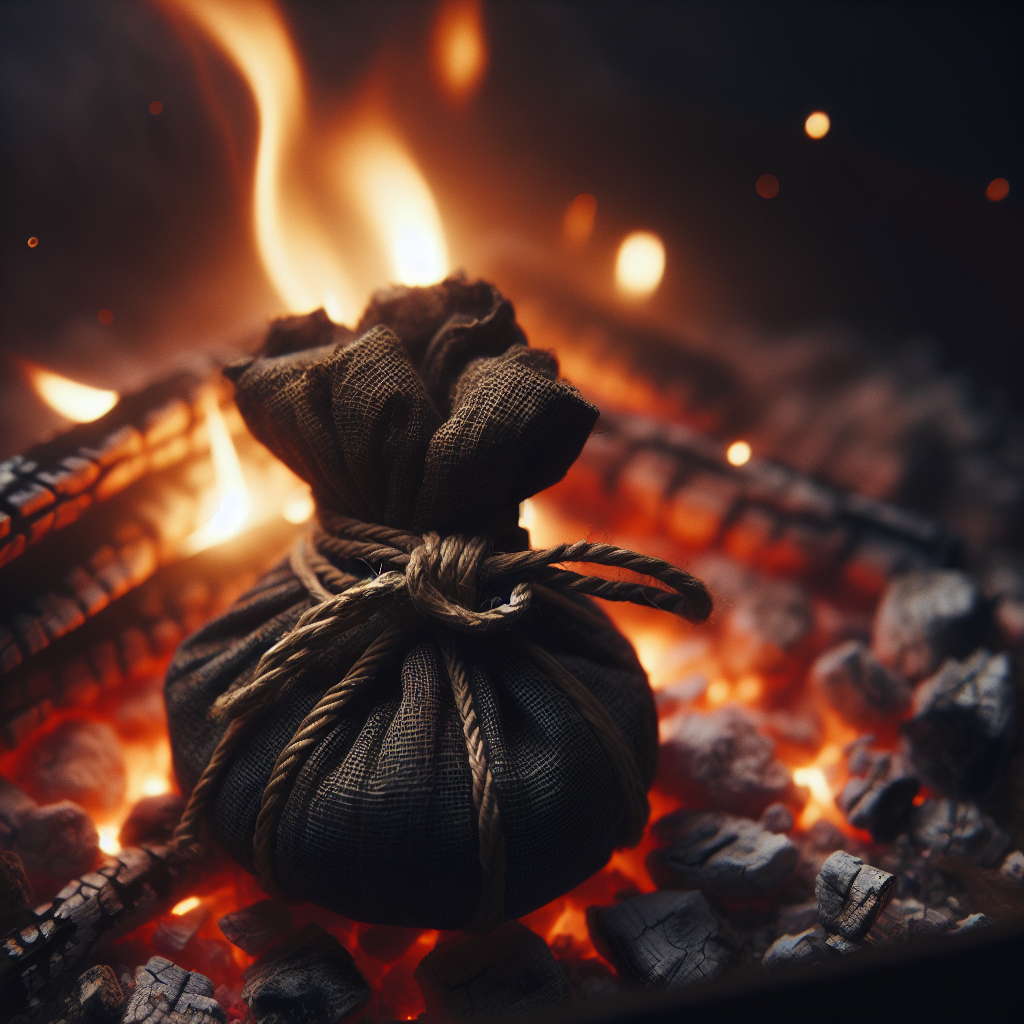In this article, you will learn a simple and effective technique for making and using char cloth. Char cloth is a fantastic tool to have on hand for outdoor enthusiasts and survivalists alike. It is an excellent fire-starter material that can be easily ignited with a spark or flame. Whether you’re camping in the woods or preparing for any emergency situation, knowing how to make and use char cloth can be the key to starting a fire quickly and efficiently. So, let’s dive right in and discover the step-by-step process of making and utilizing this handy resource.
Choosing the Right Fabric
When it comes to making char cloth, one of the first decisions you need to make is whether to use natural fabrics or synthetic fabrics. Natural fabrics, such as cotton and linen, have long been a popular choice for making char cloth due to their ability to char easily and consistently. They also tend to produce a higher-quality char with better ember longevity. Synthetic fabrics, on the other hand, can be more challenging to work with as they often have a higher melting point and may not char as evenly. However, they can still be used to make char cloth if you prefer the benefits they offer.
Preferred Types of Natural Fabrics
If you decide to go with natural fabrics for making your char cloth, there are a few preferred options that have proven to work well. One popular choice is 100% cotton fabric, such as an old t-shirt or denim material. These fabrics are readily available and tend to char easily. Other options include linen and hemp, which also have good charring properties. It’s important to note that any natural fabric you choose should be free of any coatings, dyes, or treatments that may interfere with the charring process.
Testing Fabrics for Charring Ability
Before you start making char cloth, it’s a good idea to test your chosen fabric to determine its charring ability. To do this, simply cut a small square of the fabric and place it in a fire-safe container. Use a heat source, such as a lighter or match, to ignite the fabric. Observe how well it chars and burns, paying attention to how long it holds an ember. This simple test will give you a good indication of whether or not the fabric is suitable for making char cloth. If it doesn’t char well or burns too quickly, you may want to consider using a different fabric.

Preparing the Fabric
Once you have chosen your fabric, it’s time to start preparing it for charring. The first step is to cut the fabric into small squares. These squares should be approximately 2 inches by 2 inches in size, although you can adjust the dimensions based on your specific needs. Cutting the fabric into smaller squares will ensure that each piece chars evenly and thoroughly.
After cutting the fabric, it’s important to clean and dry it thoroughly. Any dirt, debris, or moisture on the fabric can interfere with the charring process and result in lower-quality char cloth. You can hand wash the fabric using mild detergent and warm water, then allow it to air dry completely. Make sure the fabric is free of any wrinkles or folds before moving on to the next step.
Applying Fire-Retardant Solution
To enhance the fire-resistance of your char cloth, you can choose to apply a fire-retardant solution. This step is optional but can be beneficial in certain situations, especially if you plan to use your char cloth in challenging weather conditions or for extended periods. There are various fire-retardant solutions available commercially, or you can make your own using common household ingredients. Simply follow the instructions on the product or recipe and apply the solution to your prepared fabric. Allow the fabric to dry before proceeding.
Building a Char Cloth Container
To ensure the success of your char cloth-making process, you will need a suitable container to hold the fabric as it chars. One popular option is an Altoid tin or any container of similar size. These containers are compact, portable, and readily available. Choose a metal tin to withstand the heat generated during the charring process.
Once you have selected your container, it’s essential to create ventilation holes to allow gases to escape during charring. Use a small nail or a sharp punch to make several holes in the lid of the container. These holes will help regulate the oxygen flow and prevent the fabric from burning completely.
To further protect your fabric from direct flame contact, line the container with tin foil. This will serve as an additional barrier, ensuring the fabric chars evenly and does not burn.

Making Char Cloth
Now it’s time to start the charring process and transform your fabric squares into char cloth. Begin by filling the prepared container with the fabric squares. Avoid overcrowding the container, as this can result in uneven charring. Leave some space for the fabric to expand as it chars.
Next, seal the container tightly to prevent oxygen from entering during the charring process. A secure and airtight seal will help create an oxygen-depleted environment necessary for charring. Use the lid of the container or any other suitable method to ensure a tight seal.
Now that you have prepared the container and sealed it, it’s crucial to create a fire hazards-free environment. Find a suitable location for charring the fabric, away from flammable materials and with proper ventilation. A safe outdoor area, such as a fire pit or a designated charring station, is ideal. Ensure you have a fire extinguisher or water source nearby in case of any unexpected emergencies.
The Char Cloth Charring Process
With everything in place, it’s time to initiate the char cloth charring process. Start by selecting the charring location and preparing your heat source. This can be a campfire, a charcoal grill, or any other controlled flame. Make sure to follow proper fire safety measures and regulations when using an open flame.
Hold the container containing the fabric squares over the flame, allowing the heat to penetrate the metal and start charring the fabric inside. Keep a close eye on the container and monitor the charring process. It can take several minutes for the fabric to start charring, so be patient and avoid rushing the process.
Once the fabric starts to char and produce a smoky flame, it’s a sign that the charring process is in progress. Continue heating the container until the smoke and flame subside, indicating that the charring is complete. Avoid opening the container during this process, as it can introduce oxygen and interrupt the charring process.
Inspecting and Storing Char Cloth
After the charring process is complete, carefully remove the container from the heat source and allow it to cool down completely. Once it has cooled, open the container and inspect the charred fabric. The fabric should appear black and brittle, resembling charcoal. It should easily crumble into small, combustible pieces when touched.
Check for consistency among the fabric squares to ensure they have all charred evenly. If you notice any partially charred pieces, they can be re-charred in a separate charring session or discarded if they are too far gone.
To preserve the quality of your char cloth, store it in an airtight container. This will protect it from moisture, air, and any potential contaminants that could affect its performance. A small metal tin or a resealable plastic bag works well for storing char cloth.
Using Char Cloth as Tinder
Char cloth is an excellent fire-starting material and can greatly enhance your ability to create a fire in challenging conditions. To use char cloth as tinder, it’s essential to gather and prepare additional fire-building materials beforehand. This can include small twigs, dry leaves, or any other easily ignitable material.
To create a fire bundle with char cloth, simply take a small piece of char cloth and nestle it in the center of your prepared fire materials. Wrap the materials tightly around the char cloth, ensuring it is fully enclosed. Gently blow into the bundle to introduce oxygen and ignite the char cloth. The char cloth will catch fire easily and transfer its flames to the surrounding materials, helping you start a fire quickly and efficiently.
Alternative Uses for Char Cloth
While char cloth is primarily used as a fire-starting tinder, it has several alternative uses that can come in handy in survival or emergency situations. One such use is emergency signaling. The black color and smoky flame characteristic of char cloth make it highly visible, especially against a contrasting background. You can ignite a small piece of char cloth and use it to signal for help by creating distinct puffs or plumes of smoke.
Char cloth can also be used to improvise a water filter. By layering char cloth with sand, gravel, and other filtering materials, you can create a simple yet effective filtration system. The char cloth acts as a physical barrier, trapping impurities and sediments while allowing water to pass through.
In addition, char cloth can be used for repairing gear in the field. If you have a torn backpack, tent, or clothing, you can use char cloth as a temporary patch. Simply place a piece of char cloth over the tear and carefully apply heat from a flame source. The heat will cause the char cloth to melt slightly and adhere to the fabric, creating a temporary seal until proper repairs can be made.
Char Cloth Safety Precautions
When working with fire and char cloth, it’s essential to prioritize safety and take necessary precautions to prevent accidents or injuries. Always work in a well-ventilated area, especially when charring the fabric, to avoid excessive smoke inhalation. Ensure that there are no flammable materials nearby that could potentially ignite.
Using proper fire safety measures is crucial throughout the char cloth-making process. Keep a fire extinguisher or water source close by in case of emergency. Avoid working with open flames indoors or in windy conditions, as this can increase the risk of accidents.
Lastly, it’s important to avoid direct skin contact with char cloth, especially when it is burning or hot. The fabric can reach high temperatures and cause burns or injuries. Always handle char cloth with appropriate tools, such as tongs or heat-resistant gloves.
Conclusion
By understanding the benefits of char cloth and learning how to make and use it effectively, you can enhance your fire-making skills and increase your preparedness in outdoor or survival situations. Char cloth is a versatile and reliable fire-starting tinder that can be easily made from natural fabrics. Additionally, it has various alternative uses that can prove invaluable in emergency situations.
Remember to experiment and refine your char cloth-making process to find the technique that works best for you. With practice and experience, you’ll become proficient in creating high-quality char cloth that consistently ignites and helps you start fires with confidence. So, gather your materials, follow the steps outlined in this article, and embrace the knowledge and skill of char cloth-making.

